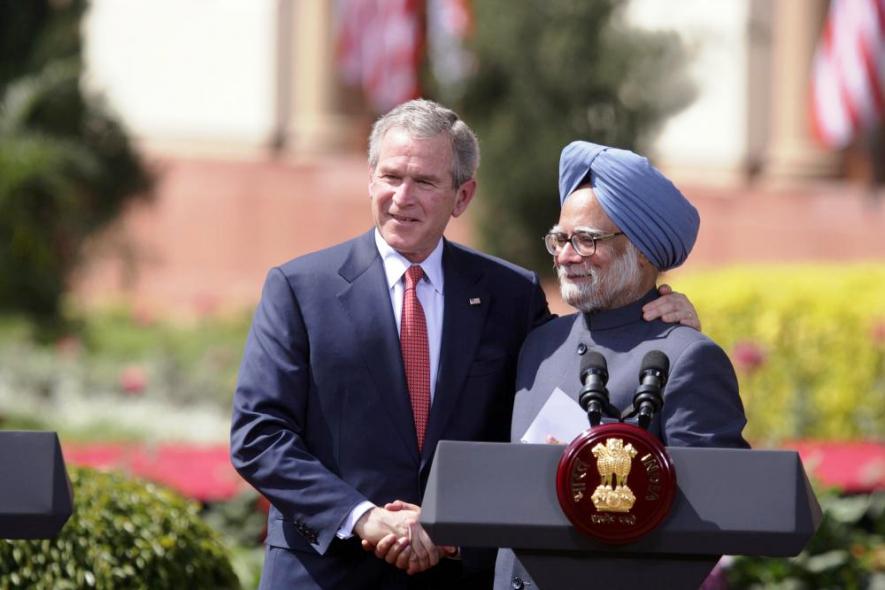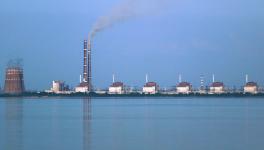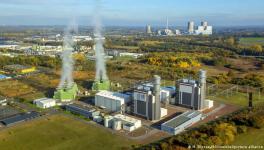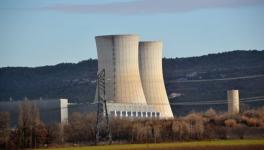Looking Back at India-US Nuclear Deal

U.S. President George Bush and India's Prime Minister Manmohan Singh exchange handshakes in New Delhi on March 2, 2006.
More than twelve years have passed since the India-US nuclear deal. Pranab Mukherjee, then India’s External Affairs Minister, and Condoleezza Rice, the US Secretary of State, signed the US-India Civilian Nuclear Cooperation Agreement in October 2008. The deal was sold to the Indian people as a magic wand to meet India’s energy needs and end India’s recurring power cuts. Those who wear made-in-America blinkers refuse to recognise that the success of the India US nuclear deal has to get tested against the benchmark of whether it met any of India’s energy needs. On this count, the nuclear agreement is an utter failure.
As a consequence of the deal and subsequent lifting of nuclear sanctions, three nuclear plant suppliers—General Electric (GE) and Westinghouse from the US and Areva, France, were supposed to have supplied us with 18 nuclear plants. GE was allotted Mithi Virdi in Gujarat and Westinghouse Kovadda in Andhra Pradesh to build six light water reactors (LWR) each. Areva, France, was allotted Jaitapur in Maharashtra to provide six of its European Pressurised Water (EPR) reactors. Not a single plant from among these has even reached a contract stage, let alone produce electricity. Yes, India has ended its shortage of power and its recurring power cuts. But not because of adding any energy capacity under the nuclear deal.
In these 12 years, Westinghouse went bankrupt in 2017. It has only recently come out of its Chapter 11 bankruptcy proceedings. GE sold its reactor division to Hitachi, which suffered huge losses and has no appetite for building large nuclear reactors. Areva, France also went bankrupt and has been taken over by EDF, the government utility that owns all the nuclear plants in France. The only nuclear power plants being built in India are either indigenous or use Russia’s Rosatom’s 1,000 MW light water reactors.
The Left parties broke with the Manmohan Singh UPA government on the India US nuclear deal, arguing that it would not significantly help meet India’s energy needs. Instead, in the guise of providing nuclear energy, the deal would weaken India’s strategic autonomy that it had zealously maintained since independence. Since then, India has signed a series of defence agreements with the US. Recently, it joined the US-led Quad naval exercises in the Indo-Pacific. This is the distance that India has travelled from its non-alignment days.
During the rather acrimonious debate surrounding the India US nuclear deal, many grandiose plans for nuclear energy got floated by the government and the nuclear bosses. One plan was to set up 63,000 MW of nuclear power capacity by 2031-32. The Chairman and Managing Director of the Nuclear Power Corporation, SK Jain, had then said, “Out of the total target of 63,000 MW, about 40,000 MW will be generated through Light Water Reactors (LWR) with international cooperation.”
In its exchanges with the UPA, the Left had called this out as not feasible; it also flagged its prohibitive costs. None of the 18 plants supposed to have been set up by GE, Westinghouse or Areva—now EDF—show any sign of materialising. Why? Their costs would ruin any utility which would own these plants. These plant deals are periodically dusted and brought out when a US or French dignitary visits the country.
On the promise of imported nuclear reactors, we have slowed down our indigenous nuclear-energy program. In the last 12 years, we have added only two new units of 220 MW capacity of indigenous design and two units of 1,000 MW of Russian design. Another 21 nuclear power reactors with an installed capacity of 15,700 MW are now planned for completion by 2031. The bulk of these are indigenous plants, and 4,000 MW are from Rosatom. That means that of the supposed 40,000 MW of imported Light Water Reactors by 2031, only 6,000 MW from Russia will materialise. And none from the US or other western sources.
Why did the India US nuclear deal flop so badly?
The key reason is a complete miscalculation by the Indian political establishment of the supposed strength of the US nuclear industry; and the belief that Bhabha Atomic Research Centre (BARC) and the Nuclear Power Corporation were not good enough.
There is a misconception that the Three Island near-meltdown of a nuclear reactor was why nuclear energy lost favour in the US. The US nuclear industry lost out with the power utilities due to its inability to meet construction schedules and huge cost overruns. With the emergence of cheap natural gas in the 90s, most utilities switched to gas for their newer plants. The promised nuclear renaissance to avoid carbon emissions to produce electricity never arrived, as renewable costs have dropped continuously, while the nuclear energy disease of cost and time overruns continued.
An MIT group recently finished a two-year study—The Future of Nuclear Energy in a Carbon-Constrained World—on the future of nuclear energy. Their conclusions are damning: the US and Western European companies have lost the ability to build large nuclear plants. The generation of engineers and nuclear physicists involved in the halcyon days of nuclear energy have retired or are no longer there. There is no institutional memory left of how to construct such large plants within the companies that still bear the nameplates of their past.
The results are starkly visible in the four plants that Westinghouse is building in two locations in the US. Two Westinghouse reactors in Carolina were abandoned after spending a whopping $9 billion when it turned out that the plants would cost $25 billion or more than twice the original contracted price to finish. It was also years behind schedule. In Georgia, the Vogtle plant being built by Westinghouse will cost more than twice the initial estimate of $11.5 billion. Planned originally to be finished by 2016 and 2017, the two units are nowhere near completion.
Areva’s record in Flamanville, France, is even worse. The Flamanville plant was to be commissioned by 2013 and cost EUR 3.3 billion. Instead, it is running ten years late, and its costs—according to France's Court of Audit—have risen almost six times: to an astronomical EUR 19.1 billion!
The MIT report notes that this western disease of failed nuclear plants does not extend to Russia, South Korea, China and India, which can build nuclear plants within budgets and schedules.
Given the costs of renewables and the risks associated with nuclear reactors, we are not discussing the larger question of nuclear energy as a part of our future energy mix. (Remember Fukushima.) We are restricting our discussion to the India-US nuclear deal, which assumed that nuclear plants would meet a share of our energy needs. Even with this assumption, the Left had pointed out in its exchanges with UPA that indigenous capability existed for nuclear energy; and the US and other western options like France's Areva would be prohibitively expensive.
Why then did India fall into the trap of the India-US nuclear deal? For the US, the nuclear hype had two major objectives: one was to rescue the moribund nuclear industry in the US, which was facing a bleak future. The Indian market looked attractive, particularly if it could persuade India to buy high-cost nuclear plants from Westinghouse and GE. The second was to tie India to US nuclear supplies and create a lock over its future policies, under the guise of giving a place at the nuclear table. It would help the US steer India to its strategic embrace, jettisoning non-alignment.
After a very rocky period post the 1974 Pokhran explosion and the US and Canada imposing sanctions on India, India built an independent nuclear industry. If it got tied to western nuclear supplies again, it would be vulnerable to sanctions—as it was for its GE reactors in Tarapur and CANDU reactors from Canada. BARC and NPC had taken years to master the CANDU reactors on their own. In the process, they have helped India develop an indigenous electronics industry, complex metallurgical processes, quality control in engineering. All these have helped India immensely in its quest to master new technologies.
The India-US nuclear deal was an attempt to bend its foreign policy. It would also erode its self-reliant mode of developing technology. Twelve years later, what do we see? The US objective of capturing the Indian nuclear energy market has failed. The aim to convert India into a subordinate ally seems to have succeeded
Get the latest reports & analysis with people's perspective on Protests, movements & deep analytical videos, discussions of the current affairs in your Telegram app. Subscribe to NewsClick's Telegram channel & get Real-Time updates on stories, as they get published on our website.
























